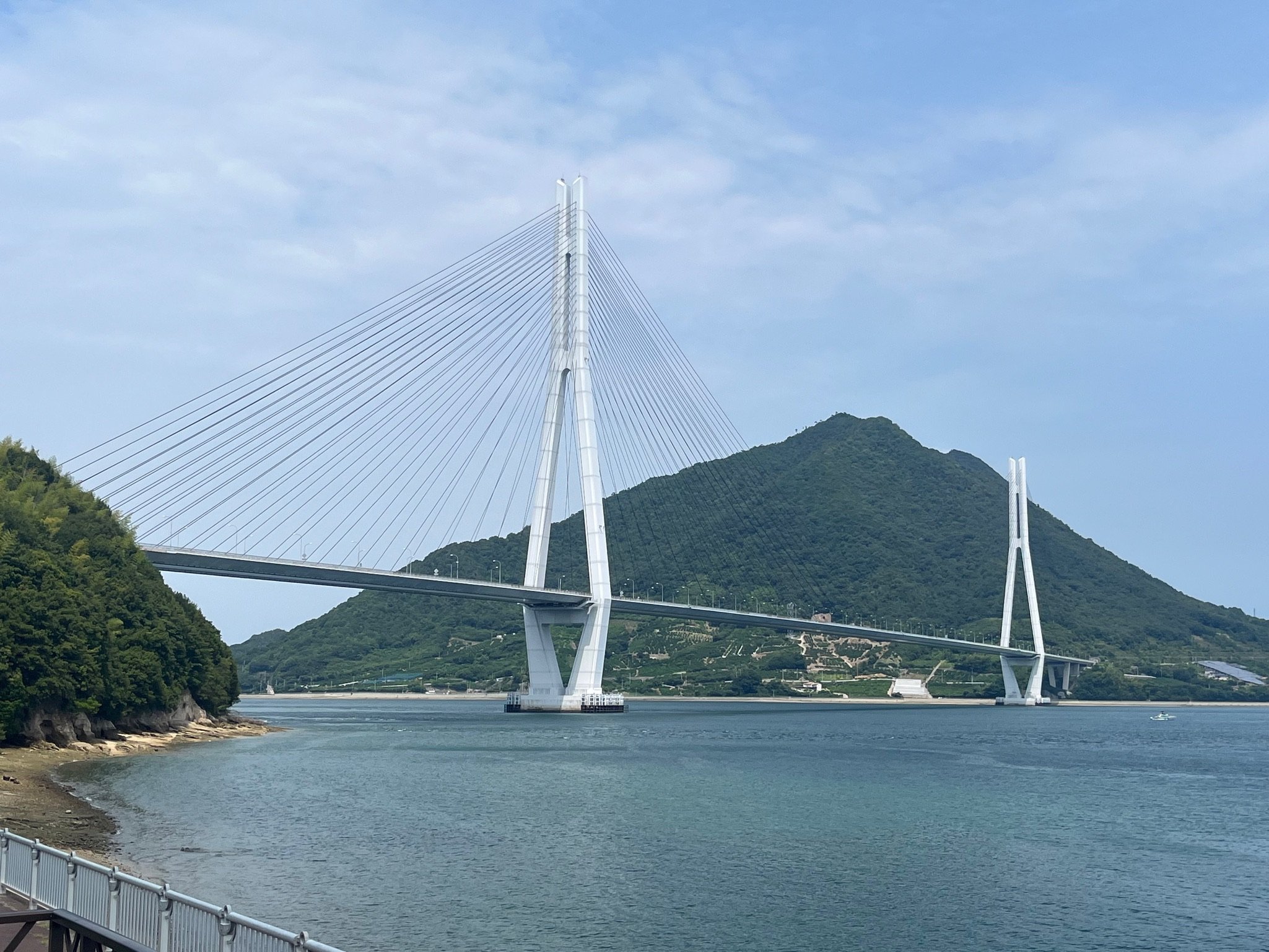Japan
August 2022
Our trip began with a week in Tokyo to explore the capital and prepare for our cycling trip. We then took the bullet train to train to Hiroshima to start our 3-week bike journey back to Tokyo by way of the Kyoto region and the “Japanese Alps”. Finally, we finished off our amazing month by climbing the iconic Mt Fuji.
We had been trying to visit this beautiful country since the start of our Olmsted experience. Yet, Japan’s COVID entry restrictions prevented us from doing so. We discovered this summer, if we entered as a military family, we could visit the country even if general tourism had not fully reopened. We did our research, gathered our documents, and set off for Japan.
Tokyo
While in Tokyo, we enjoyed the lovely hospitality of an Olmsted family living in Tokyo. Unlike virtually everywhere else we visited in Asia, Tokyo has almost no scooters. Instead, the city has excellent cycling and rail infrastructure to help folks get around. Using our bicycles, our friends brought us to multiple famous shopping and business districts. They taught us how to make our own okonomiyaki (a savory Japanese pancake), take in the beautiful Tokyo skyline at sunset, and brought us a swanky restaurant which was the inspiration for the well-known scene with the Crazy 88’s in the movie Kill Bill. Between seeing the sights, we planned our three week cycling trip from Hiroshima back to Tokyo.
Hiroshima
We arrived in Hiroshima on the 6th of Aug. The city was bustling with activity. On the way to our BnB, we encountered a protest march flanked by police officers on all sides. When we headed out to dinner later that night, we saw a sign on the Peace Museum announcing the 6 Aug 2022 Memorial Peace Ceremony. Unbeknownst to us, we arrived on the 77th anniversary of the dropping of the atomic bomb. As we observed our surroundings more closely, we noticed a shrine in which a long queue of people waited to give offerings and to pray for peace.
We approached the river where we saw a colorful collection of lit lanterns floating downstream in memory of all those who lost their lives to the bomb. The power of visiting Hiroshima is that it provides human testimony to the devastation of war. People are not figures in a textbook nor “acceptable losses” in a military plan of operations. They are real lives with stories to tell, connecting with those who dare to listen.
Island hopping
After our visit to Hiroshima, we set off in earnest on our cycling trip. The first segment spanned east from Hiroshima to Imabari. We spent many of these first few days cycling along a coastal highway, testing out traditional Japanese guesthouses, and relaxing in local onsen bathhouses.
Our favorite day from this section was a cycling road that consisted of a day of island hopping from Onomichi to Imabari. We cycled on the very popular Shimanami Kaido cycling road. This road connects seven small islands with dedicated bike paths along the road and across the bridges. We picked a beautiful day to cross these islands. We had just enough cloud coverage to cool the temperatures, but enough sunlight to bring out lovely blues in the bays. In high spirits throughout the day, we tore up the ramps to cross the bridges from island to island. By the end of the day, I was pretty fatigued by the quality cycling and struggled to have enough energy to get myself to dinner. Thank goodness for Ryan’s support and understanding.
Kyoto region
The next part of our trip weaved through the historic towns of Himeji, Kobe, Osaka, Nara, and Kyoto. The cities were rich in history and delicious food. One of our favorite places to dine in Japan are Izakayas. These are small restaurant bars consisting of a few seats and one to two bartenders who prepare both drinks and food. We found ourselves in a small Izakaya in Osaka wherein the bartender handed us a menu consisting of handwritten Japanese.
After a few minutes of struggling with Google translate, we asked the bartender for his recommendations from which we enjoyed a combination of grilled veggies, amazing citrus flavored chicken, and Japanese style bibimbap. We felt very welcomed by the bartender and enjoyed the simple delicious fare for dinner.
Our next stop was Nara. This small city felt a bit wilder than the others in the region, due in no small part to the hundreds of deer strolling through the centrally located Nara park. These deer eagerly interact with visitors in exchange for biscuit treats sold at the park’s entrance. The playful deer combined with the sleepy streets of beautifully preserved architecture made Nara one of our favorite cities visited during our trip.
As we rode from Nara to Kyoto, we were treated to a beautiful riverside cycling path connecting the 50 kilometers between the cities. We basked in rural Japan’s vibrant green rice fields framed with emerald green distant mountains.
The highlight of our time in Kyoto was certainly spending the day with my Aunt Kyoko who was in Japan for a few weeks to visit family. We enjoyed hearing her stories of growing up in Osaka and frequently visiting historic temples in Kyoto on field trips. She took us to Kinkaku-ji, a peaceful Buddhist temple shimmering in gold in the middle of a lake. We then made the journey to another temple, the famous Kiyomizu-dera. Resting high up on the hillside, this temple offers excellent views of Kyoto city. As we passed through the grounds, our senses drew in the expansive archways, the melodic jingle of charms hung to represent visitors’ wishes, and the familiar smell of incense. After the temple, we spent a few hours relaxing in a quiet cafe while spending precious quality time with my aunt.

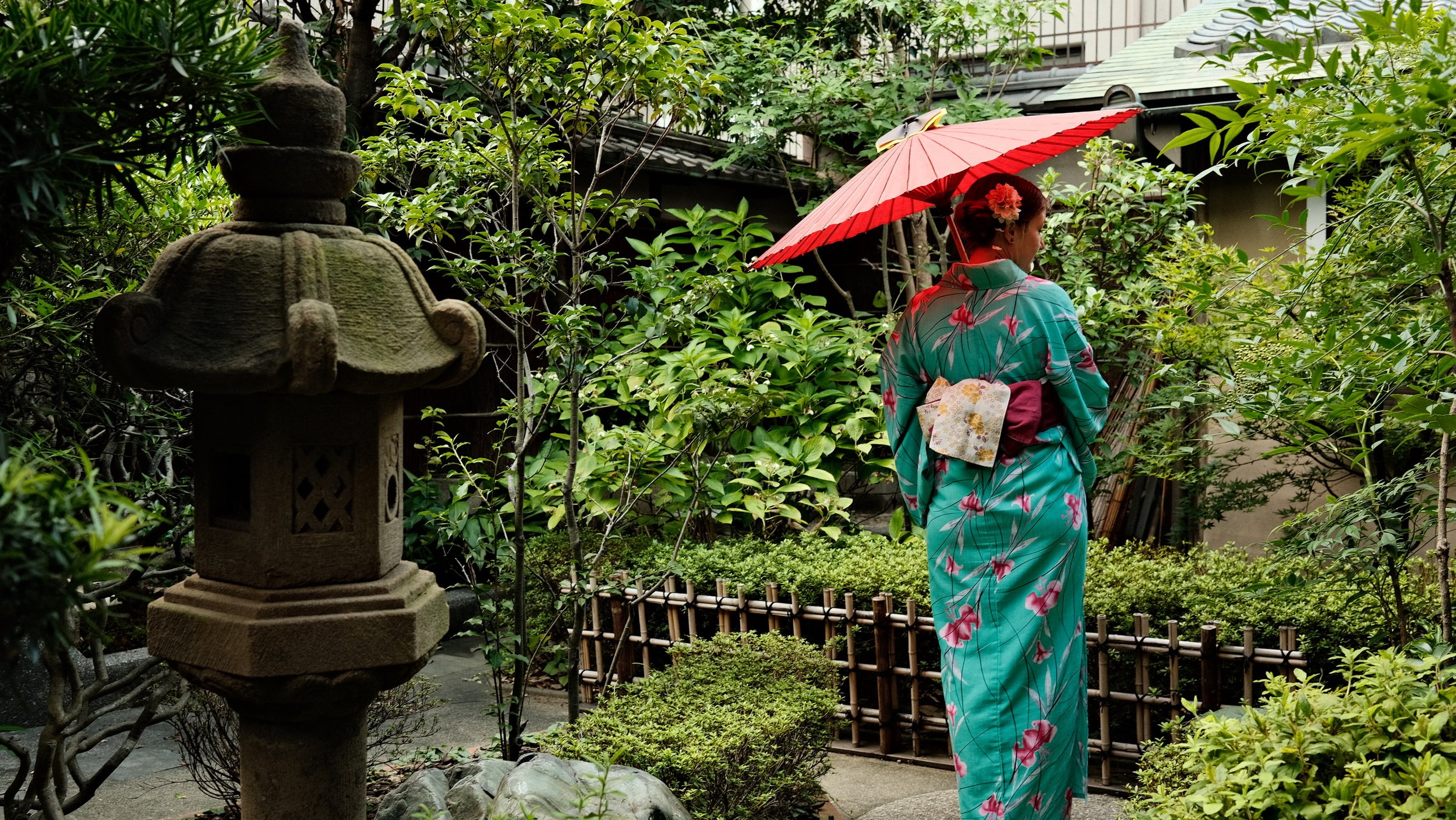

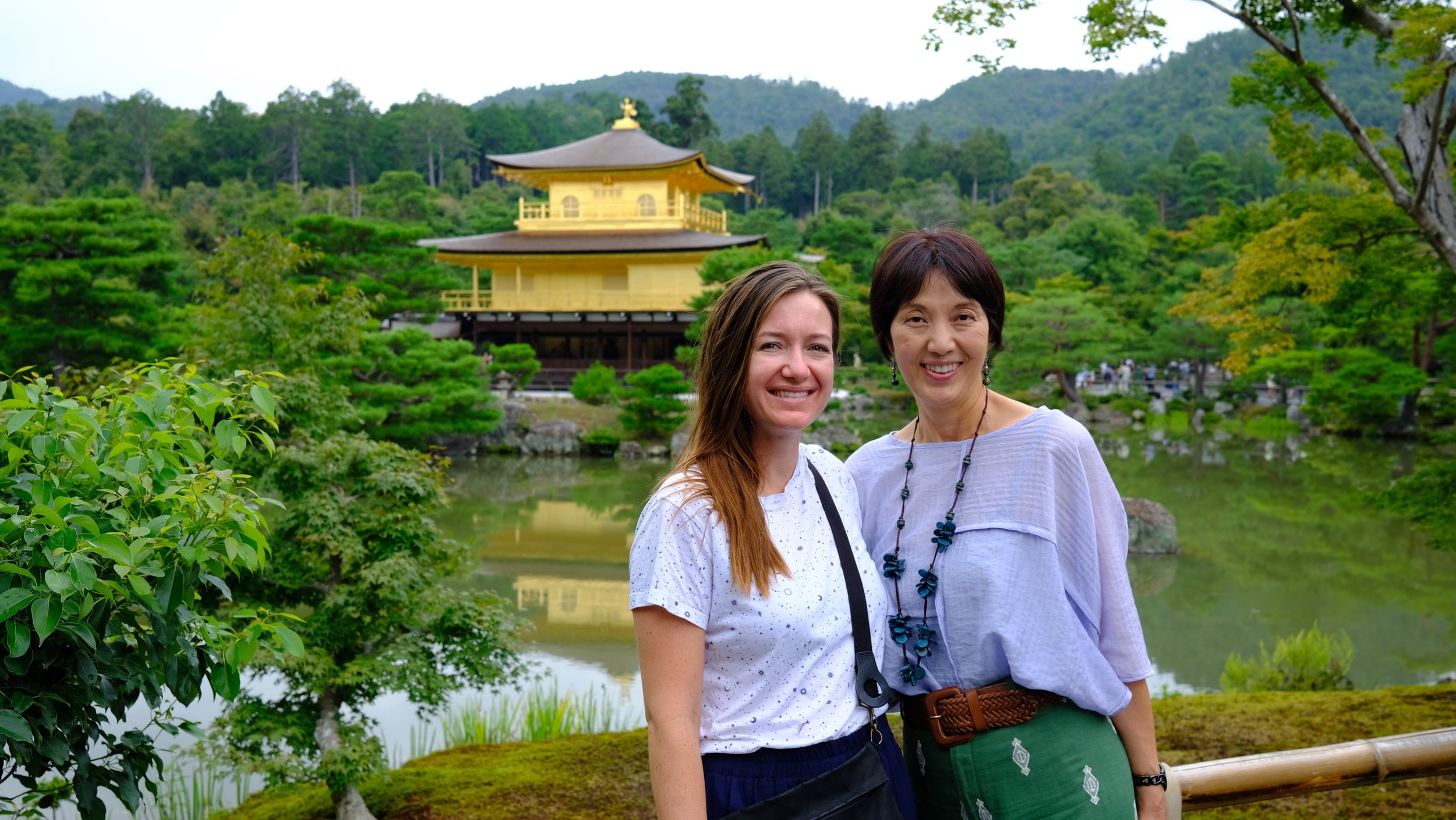
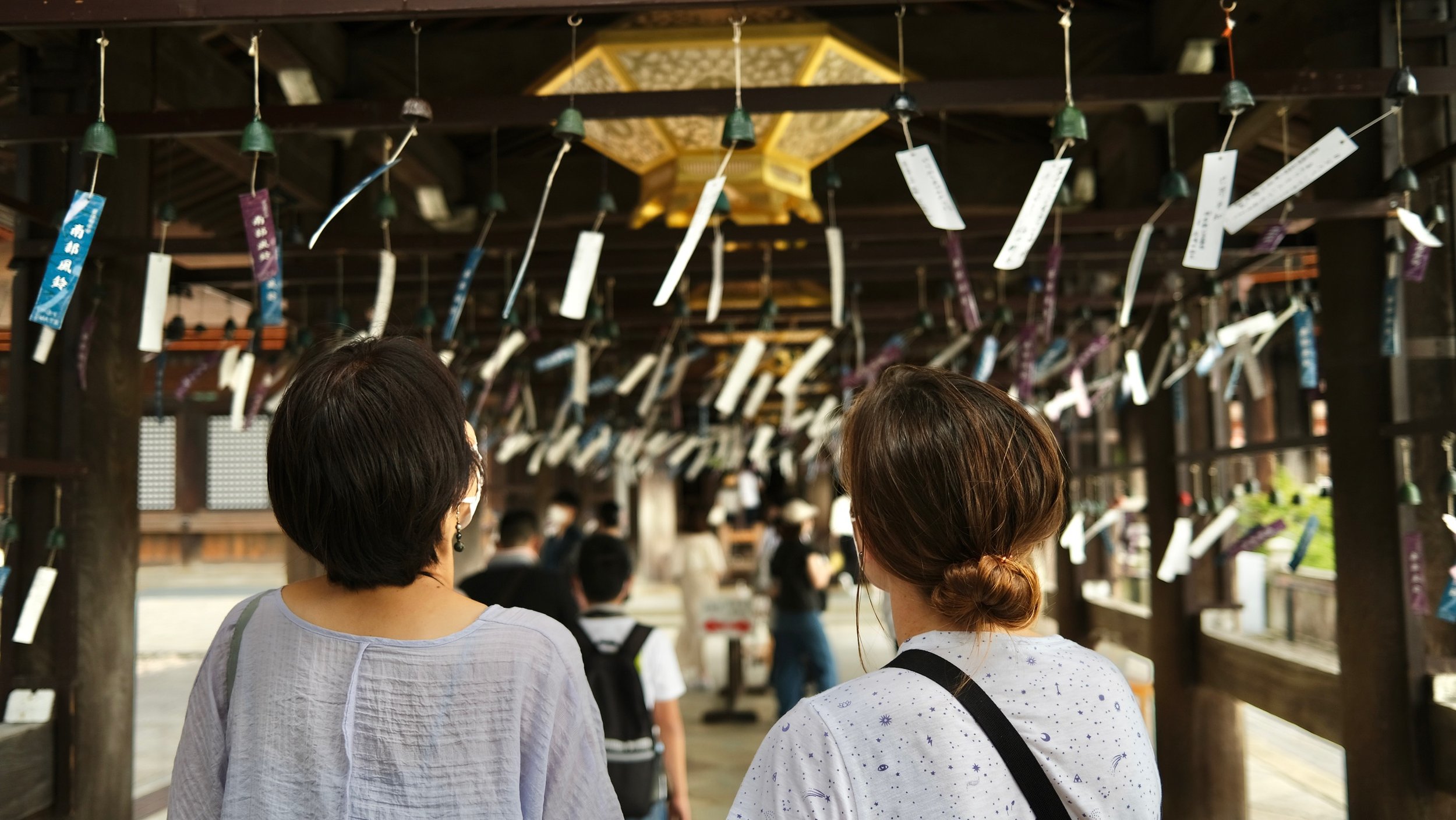


The “Japanese Alps”
Ryan and I discovered this year that we really enjoy cycling in the mountains, so long as we can avoid gradients that are too steep. So, we were excited to end our Japan cycling trip in the Japanese Alps
Our first day went fairly smoothly. While we were only covering about 30 km that day, the entire day was spent climbing uphill. While on narrow roads and slower climb speeds, we focused on staying in the approximate six inch part of the lane that we shared with passing traffic. We spent the evening in the sleepy mountain village of Hirayu. After relaxing in the hotel’s bathhouse, we took a stroll through the lush forest to snap some photographs of a nearby waterfall.
The following day was the day we’d been looking forward to all trip! The blog we used to guide our planning called this section of the route a “cyclist’s paradise”. There’s a mountain pass open only to cyclists that offers exquisite views of the Japanese Alps and specifically Mt Norikura. As we scrolled through photos online, we quickly exchanged glances of delight over what was in store.
When we departed the village of Hirayu, the visibility swiftly decreased and a light drizzle started. Ryan and I kept cross-checking the forecast with our projected time en-route. We remained hopeful that the skies would clear in time to catch the epic views as we rode through the pass.
The end result was worse! After cycling up the mountain for a solid two hours, we arrived at the entrance to the pass with only a few more kilometers to go until we reached our highest point for the day. As we slowly approached the entrance, a guard walked towards us on the road and signaled a big X with his forearms, i.e. the universal signal forbidding us to cycle over the pass. Meanwhile, he freely allowed a tour bus to cross. A frustrating number of minutes passed trying to use Google translate to convince the guard to let us through. However, he stood his ground and we had to head back down the mountain and board a bus to our next destination. We needed the rest of the day to recover from our disappointment.
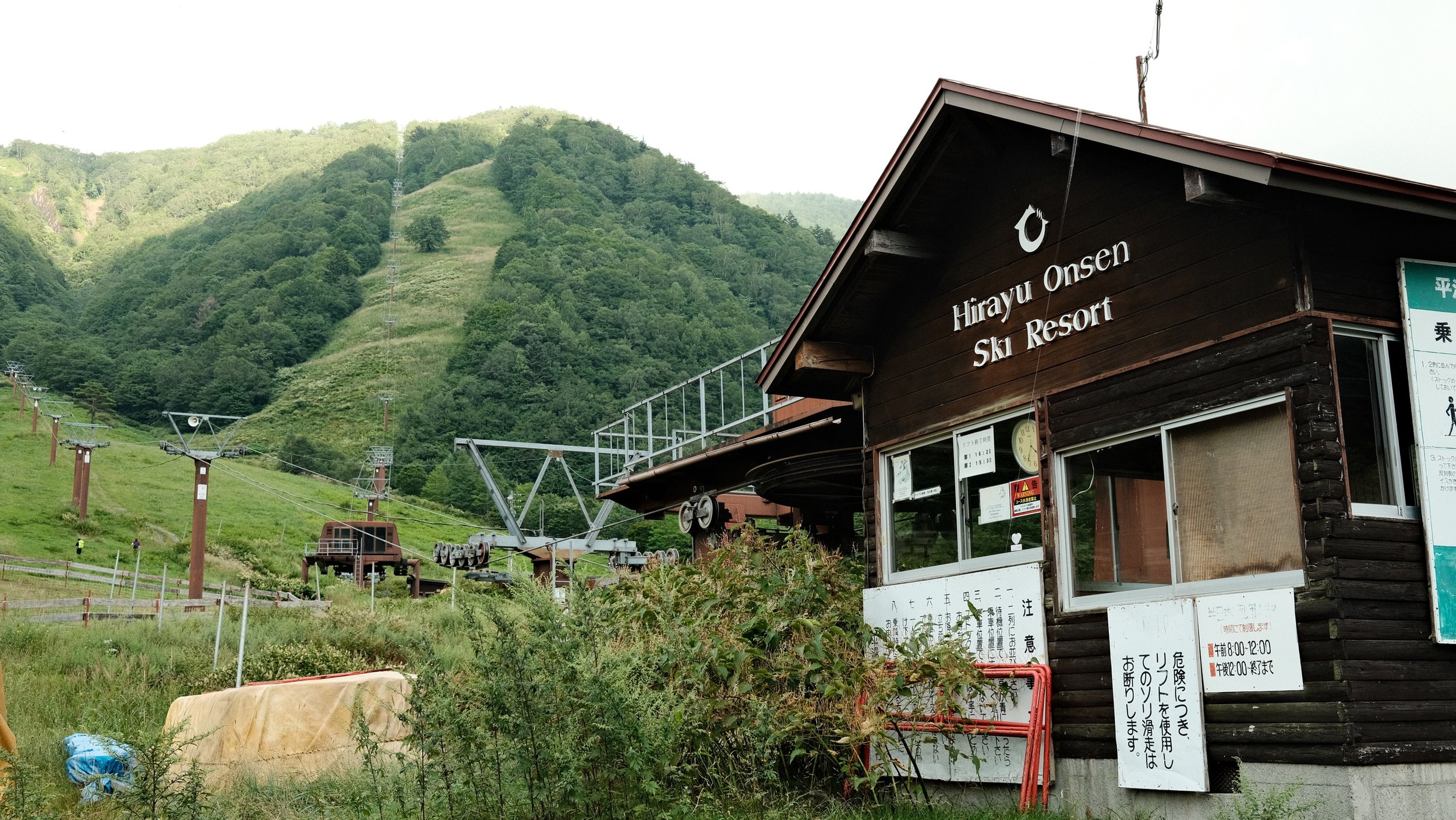
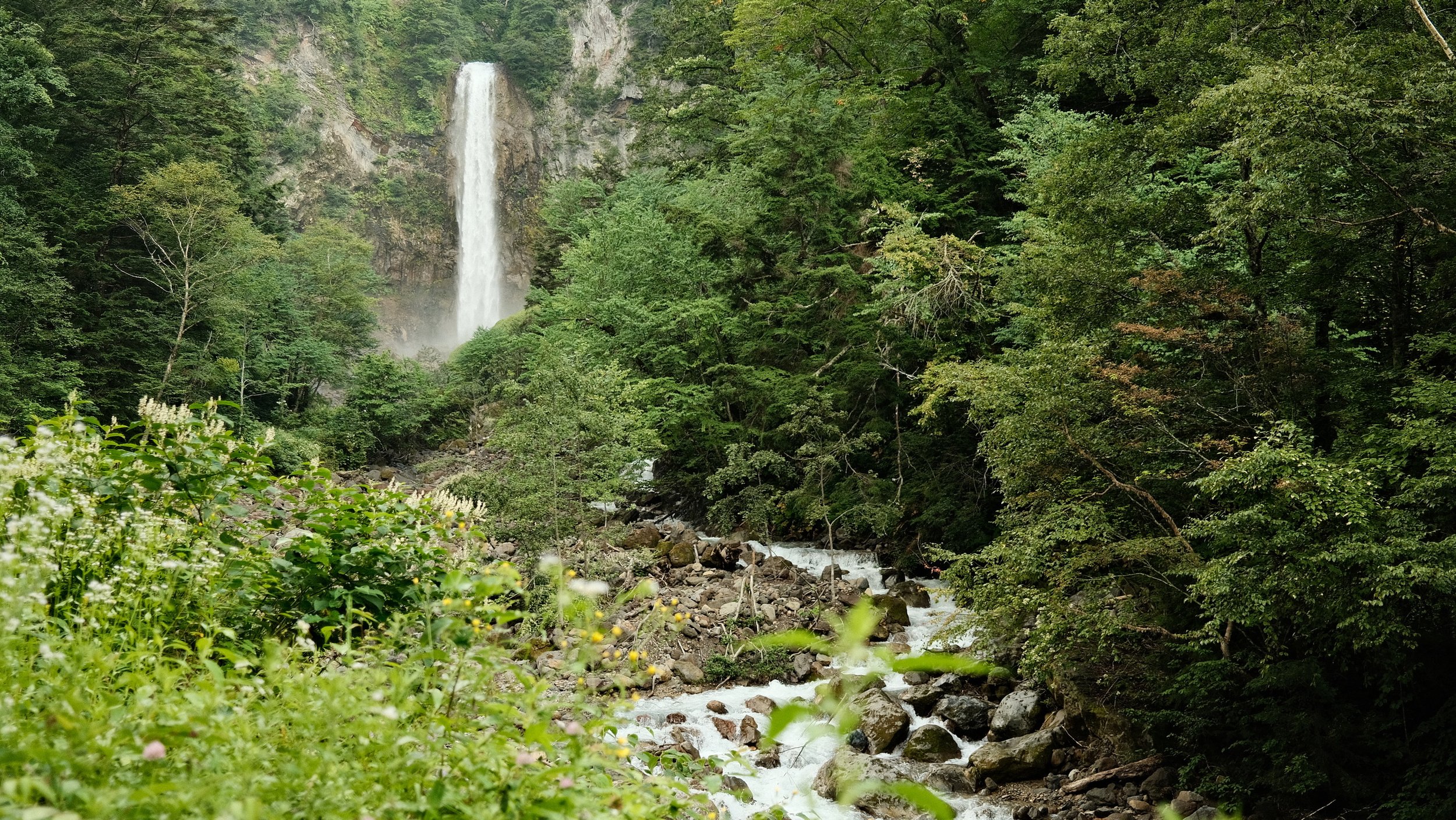
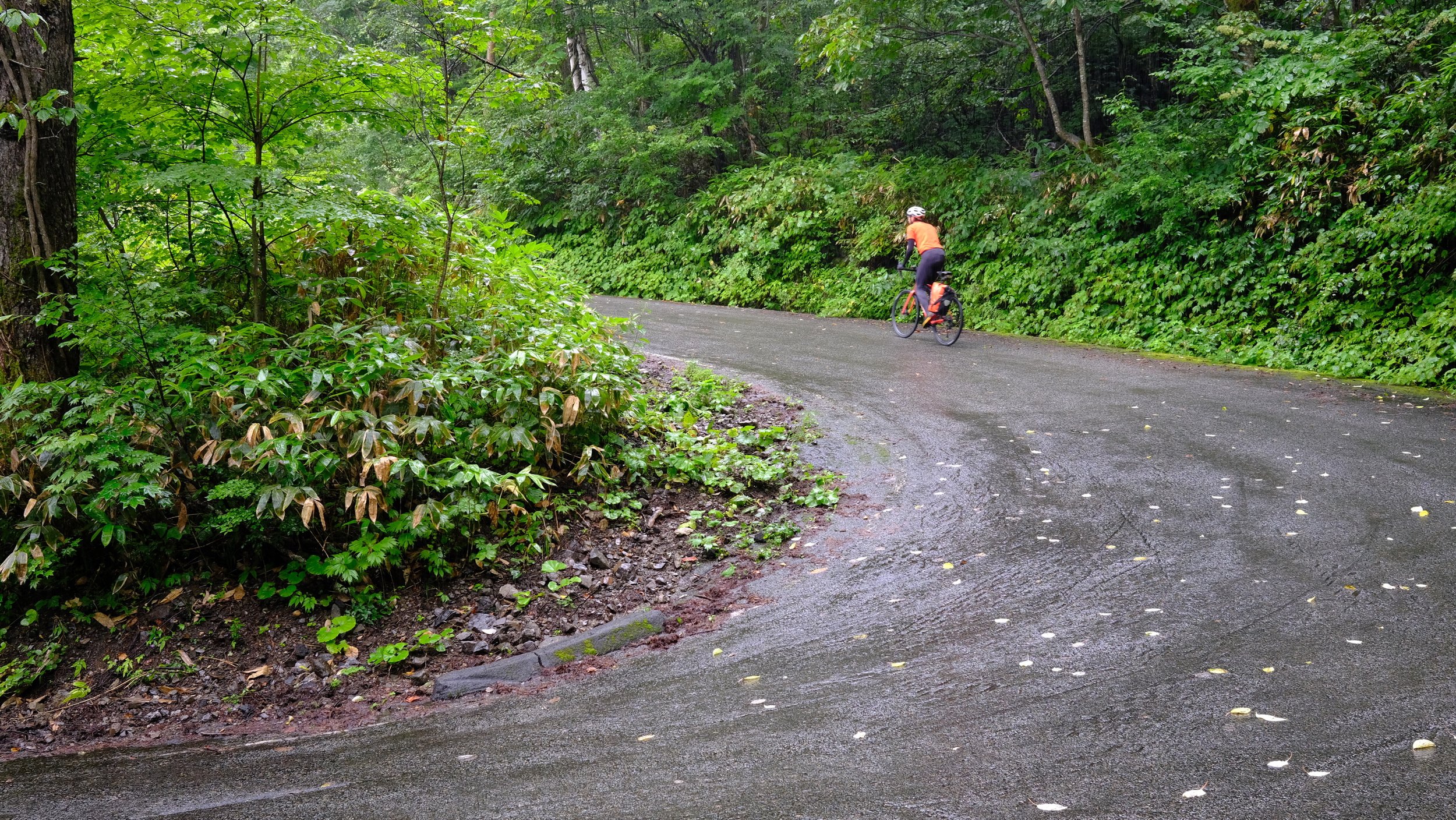
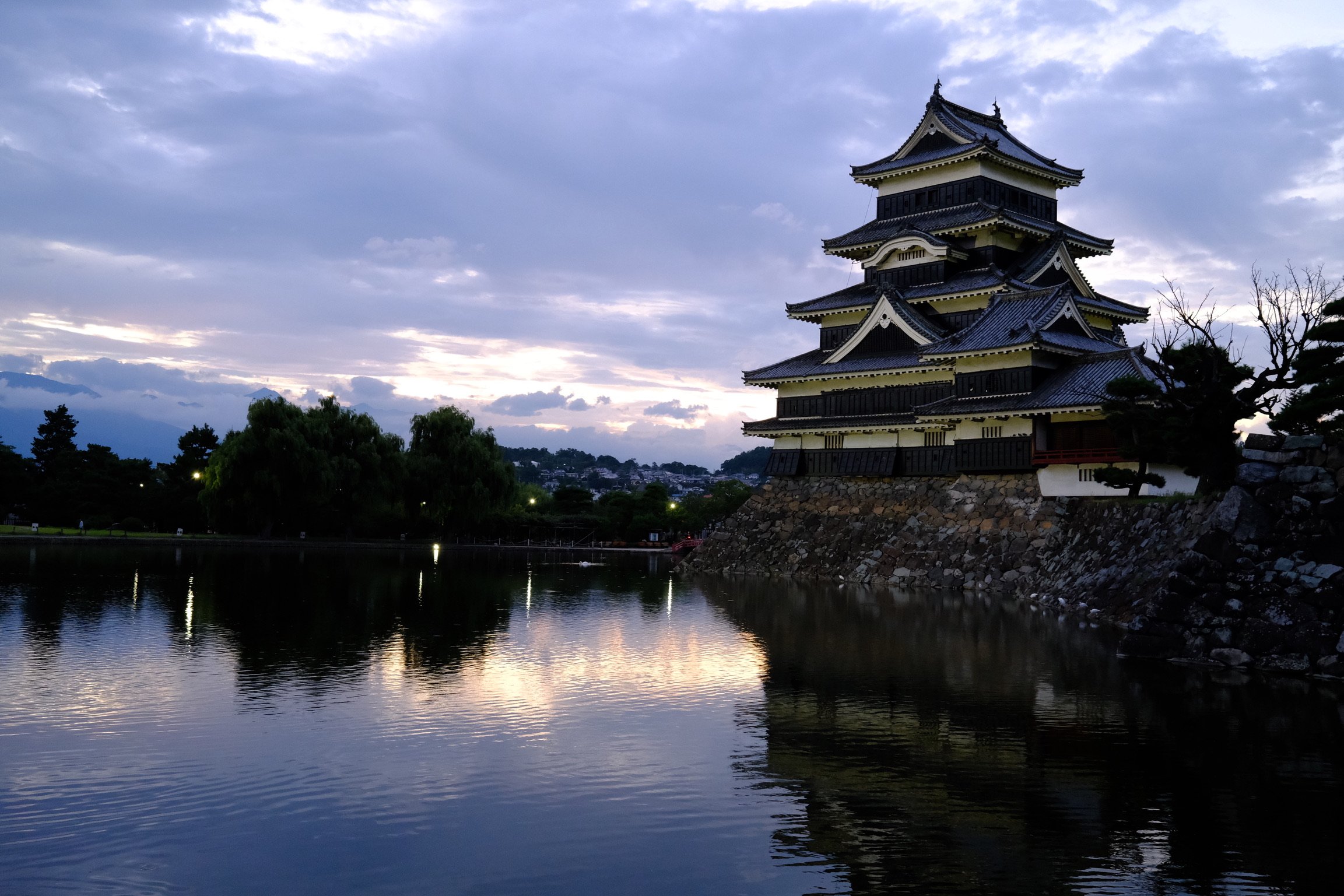
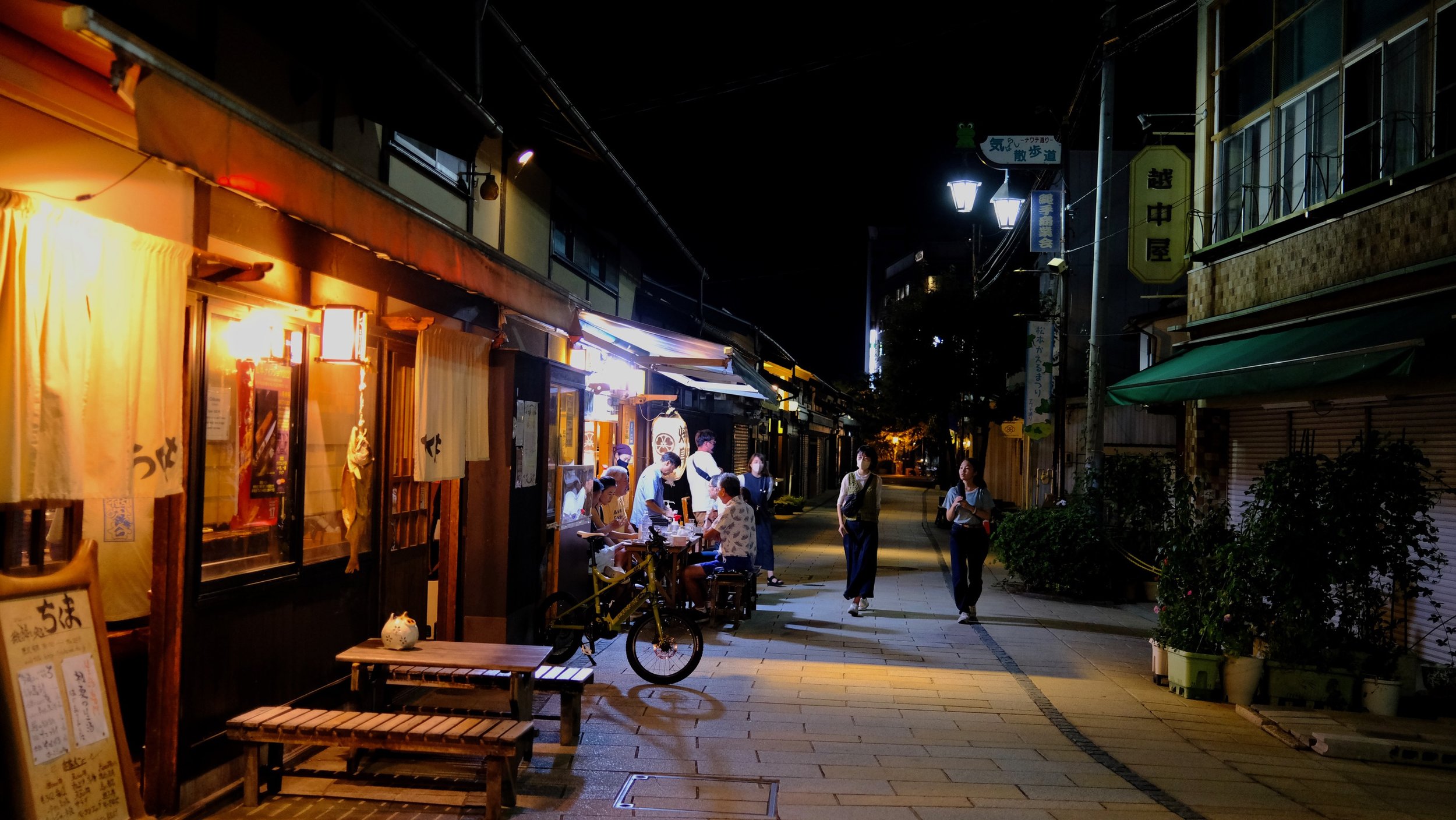
On our final day in the mountains, we cycled from Matsumoto to Nagano, the home of the 1998 Winter Olympics. The day consisted of two challenging climbs, picturesque wooded mountains, and a secluded lake at the top of our second climb where Ryan and I took some time to enjoy the fruit of our hard work. Entering into Nagano, our GPS guided us along rural back roads lined with orchards full of beautifully ripe peaches. I struggled to not pluck one off the tree as we went.
We rested in Nagano before boarding a train back to Tokyo thus ending our three week excursion.
Mount Fuji
Our last big adventure in Japan was climbing Mt Fuji. This famous volcano stands out amongst the flat plains of Tokyo calling all folks to the challenge. We set off in a group of four. Ryan and I joined my fellow Olmsted classmate and a friend from his Master’s program. Fuji sits at 12,388′. Our plan was to hike up most of the way up the day prior, sleep in a mountain lodge, and save the last 2 km for a 3am morning sunrise ascent.
At the beginning of the trail, Ryan and I bought a special hiking stick. Each time we stopped by a hut along the trail, we had the sticks branded with a special stamp from that station. This worked out perfectly since Ryan and I didn’t have our hiking poles with us in Japan.
We settled into our lodge in the early evening. The lodge consisted of a common eating area room and bunk beds platforms for sleeping. After a day of hiking, we were excited to sit down for dinner. We were not excited to discover how little food came with dinner. This would not fill us up on a low-activity day, let alone climbing most of the way up Fuji. Thankfully they had other hot food for sale. After our second course, we felt replenished and ready to rest up for our early morning summit.
When we departed our cabin the next morning, we were stunned to look up the mountain to see thousands of headlamps of hikers already making their way up. We set off and then quickly came to an abrupt stop. If we were hoping for an early morning challenge on our way to the top, Fuji was not the place for it. The route was too narrow and too full of hikers to move at anything faster than a snail’s pace. Thankfully, we made it to the summit with plenty of time to find a comfortable spot to settle in for the sunrise. Being a volcano, Fuji’s flat top offers generous space for thousands of hikers to share. With the cold morning air swiftly overpowering our insufficient layers, we watched impatiently as the sun slowly crept its way up to the horizon. We enjoyed a clear morning above a blanket of clouds over Tokyo.
After sunrise, we quickly set off down the mountain at rapid speed to warm ourselves back up. Interestingly, Fuji has two different paths for ascending and descending. Unlike the ascent, which consists mostly of well-groomed switch backs, the descent is a bit steeper consisting mostly of loose gravel. For much of the way down, the path felt like we were stepping into 6 inches deep of sand causing us to slide with every step we took. Descents are usually my least favorite part of the hike, but Fuji’s descent was particularly strenuous on our quads. Our aching legs reminded us of that fact for several days after.
Ryan and I are incredibly grateful to have spent this time in Japan. We enjoyed their breathtaking scenery, the simplistic beauty of their architecture, the delightful flavors of their cuisine, and the kindness of everyday strangers.



